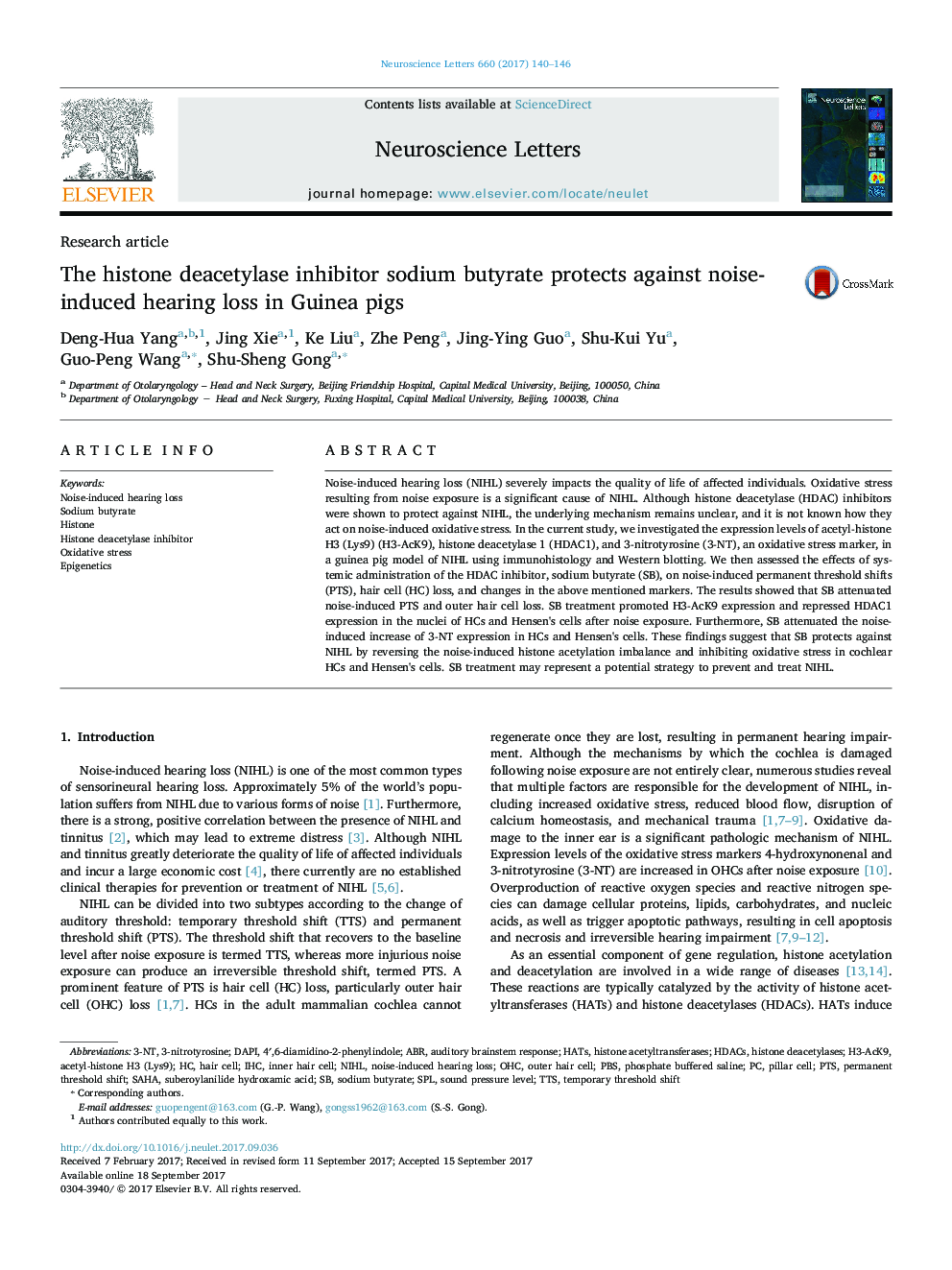| Article ID | Journal | Published Year | Pages | File Type |
|---|---|---|---|---|
| 5738543 | Neuroscience Letters | 2017 | 7 Pages |
â¢Sodium butyrate (SB) inhibits histone deacetylation and oxidative stress after noise.â¢SB attenuates noise-induced permanent threshold shifts and outer hair cell loss.â¢SB may represent a potential strategy to prevent noise induced hearing loss.
Noise-induced hearing loss (NIHL) severely impacts the quality of life of affected individuals. Oxidative stress resulting from noise exposure is a significant cause of NIHL. Although histone deacetylase (HDAC) inhibitors were shown to protect against NIHL, the underlying mechanism remains unclear, and it is not known how they act on noise-induced oxidative stress. In the current study, we investigated the expression levels of acetyl-histone H3 (Lys9) (H3-AcK9), histone deacetylase 1 (HDAC1), and 3-nitrotyrosine (3-NT), an oxidative stress marker, in a guinea pig model of NIHL using immunohistology and Western blotting. We then assessed the effects of systemic administration of the HDAC inhibitor, sodium butyrate (SB), on noise-induced permanent threshold shifts (PTS), hair cell (HC) loss, and changes in the above mentioned markers. The results showed that SB attenuated noise-induced PTS and outer hair cell loss. SB treatment promoted H3-AcK9 expression and repressed HDAC1 expression in the nuclei of HCs and Hensen's cells after noise exposure. Furthermore, SB attenuated the noise-induced increase of 3-NT expression in HCs and Hensen's cells. These findings suggest that SB protects against NIHL by reversing the noise-induced histone acetylation imbalance and inhibiting oxidative stress in cochlear HCs and Hensen's cells. SB treatment may represent a potential strategy to prevent and treat NIHL.
